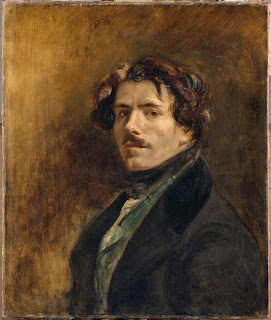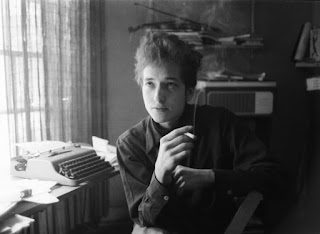$89 Million ( Basquiats )
Here Are All the Basquiats at Art Basel, Worth a Combined $89 Million
Now is a very good time to own a work by Jean-Michel Basquiat. Hot on the heels of Sotheby’s record-breaking $110.5 million sale of the artist’s Untitled(1982) last month, which made him the most expensive American artist ever to hit the auction block, Art Basel is chock full of work by the street art rebel.
Basquiat’s career was famously brief: He died of a drug overdose at 27, just seven years into his life’s work. Still, he has an outsize presence at this year’s fair, which opened to VIPs on Tuesday. Many of the works at Art Basel have surfaced at auction over the past five years at much lower prices—a testament to the steep upward trajectory of the Basquiat market.
Below, we survey all of the Basquiats—worth a combined $89 million—in descending price order.
This hand-stretched triptych, from the artist’s most coveted year (1982), is the most expensive Basquiat at Art Basel, and among the priciest works at the fair, period. A riff on the holy family slashed with icy blue paint, the work has been in the same private collection for over 16 years. The $35 million price represents a more than 2,900% increase from the work’s last public sale: It sold at Phillips in 2001 for $1.16 million (est. $700,000-900,000), according to the artnet Price database.
Earlier this week, Brett Gorvy, the former Christie’s executive who joined the gallery last year, told artnet News: “We’re bringing a $35 million painting to Basel because we believe this is the time to bring a major historic Basquiat to market. We believe that there is an opportunity to reach a very important buying public that only happens very occasionally directly in the art fair. But why shouldn’t you be able to sell a $100 million painting in that context?” As of Tuesday afternoon, the work had not yet sold.
The painting’s title refers to a trip Basquiat made as a young boy to the United Nations to visit the father of a friend. Although its color palette is less vivid than Sotheby’s record-setting work or Baby Boom, above, the canvas is heavy on the artist’s most desirable motif: heads. The painting is also one of the few works the artist made in 1982 that has no text, only images. (In an interview with The New York Times Magazine in 1985, the artist said of that landmark year: “I had some money: I made the best paintings ever.”) This work sold during the fair’s VIP preview, according to the gallery, to an international client. The $18 million price tag represents quite a markup from its last public sale in 2015, when it fetched £4.4 million ($6.7 million) at Christie’s London.
You’d be forgiven if you didn’t immediately identify this work as a Basquiat. The clearly delineated faces fanning out at the top of the painting are far more literal than is typical for the artist. “The faces are painted in profile, and it’s almost as if the more readily identifiable mask-like form is descending from them—it’s as if he is revealing his process,” says the gallery’s Valerie Carberry. As of Tuesday afternoon, the work had not yet sold.
Of the four Basquiats on Van de Weghe’s stand, the cross-shaped painting is “the most important we have here,” says the gallery’s Karl Hutter. The painting, which depicts a Christ-like figure, contains two of the artist’s trademark crowns: one in the center of the cross and another hidden at the top of the painting beneath the rust-colored paint. The work previously belonged to the dealer and collector Jan Krugier. It sold at Christie’s in 2013 for $2.85 million (pre-sale estimate: $3-4 million), according to the artnet Price Database.
Karl Hutter says that the record-setting sale at Sotheby’s did not inform the gallery’s decision to bring such a deep bench of Basquiats. “Last year we brought three works and sold all three, so that was what informed the decision,” he notes. “We haven’t changed our prices [since the Sotheby’s sale]—I could say all ships rise with the tide, but not as much.” This painting should be the most familiar to Basquiat market-watchers: It sold at auction just over one year ago at Sotheby’s for €2.7 million ($3 million), above its pre-sale estimate of €1-1.5 million.
This painting—the color of a traffic cone—contains references to the cosmic (the earth orbiting the sun) and the atomic (the path of electrons orbiting the nucleus of an atom). The painting’s title refers to the bombing of Hiroshima, an event made possible by early experiments with the element radium. The painting previously sold at Christie’s New York in November 2010 for $1.1 million with premium (pre-sale estimate: $800,000-1.2 million).
That’s right—yet another work from 1982. But this time, it’s on paper, and on offer at a price that’s higher than most major artists from this period will ever see, even for a landmark painting.
Although Basquiat did not make studies, Christophe Van de Weghe is quick to point out this work’s similarity to the record-setting work at Sotheby’s, which was created later that same year. The sharply delineated skull recalls anatomical drawings from Gray’s Anatomy; Basquiat’s mother gave him a copy of the medical book when he was hospitalized after a car crash. This drawing sold at Christie’s in 2014 for £338,500 ($580,318), just under the pre-sale estimate of £350,000-550,000.
Of course, despite the artist’s heavy presence at Art Basel, the Basquiat market’s dizzying heights may not be built to last. As Brett Gorvy told the New York Times before the landmark sale, “There will be a large number of people wanting to sell—and most of what they want to sell will be inferior. You can have a big high and then weaker paintings will pull down the market to a more sane level.”
Additional reporting by Andrew Goldstein











Comments
Post a Comment
Thank you for your response
Kind regards Pierre